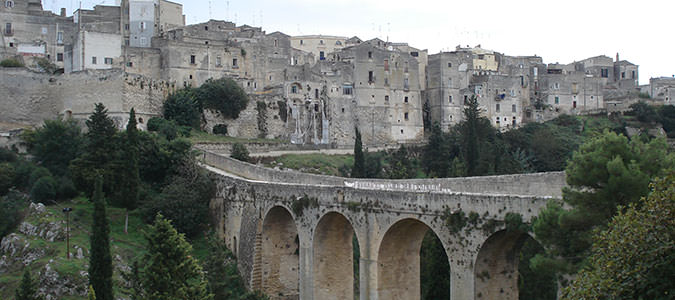What to see in Gravina
Gravina is a city of Puglia, in province of Bari, with 450000 inhabitants. It is situated 350 meters above sea-level and from 60 km to Bari. It border on south with Basilicata. It lies between pre-Appennino lucano and Murgia.The name “Gravina” comes from “gravine”: breaks of the crust of the earth similar to canyon, in fact a part of the city is situated on the edge of a large crack, similar to canyon, excavated in the limestone rocks from the stream Gravina, tributary of Bradano, from which take name the famous “gravine” of the Murgia, in a zone characterized by the presence of a lot of karst cavity, like the “Pulicchio” of Gravina.

From 6 km to Gravina grows the wood town “Difesa Grande”, one of the most important in Puglia. Gravina is, beside, one of the 13 cities which makes up the territory of “Alta Murgia National Park” (it gives ospitality to the seat of the organization of the Park), a large area of 68077 hectares, characterized by a karst area and a powerful expression of nature, which in the centuries has been shaped by men work, always respecting the places. Farms, neviera, jazzi, walls lie on a landscape which boast one of the most incredible varieties of species of fauna and flora.
Basilica Cathedral of Saint Maria Assunta
The basilica was devoted to Santa Maria Assunta, was built by Normans at the end of 11th century and was rebuilt and extended at the end of 400; it was in fact destroyed between 1447 and 1456 after a fire before and a earthquake later, which upset the entire region. It has three naves divided by columns with capitals all different between them, it’s rich of marmoreal polychrome altars built at the beginning of 700. We can also admire the baptismal font, a statue of Saint Michele of the 1538, a choir of the end of ‘500, an altar piece in rocks of 1536, a wooden crucifix of XVI- XVII century, and an organ with 2135 canes. The ceiling is in golden wood with five paints. Charming also the cript of the Cathedral.

The Church of The Virgin of the Suffrage (Purgatory)
The Church of The virgin of the Suffrage, also known as The Church of the Purgatory, was built as funerary chapel of the Orsini family between 1649 and 1654, thanks to the dukes of Gravina, Ferdinando III Orsini and his wife Giovanna Francipane della Tolfa, parents of The Pope Benedetto XIII. It was devoted to the Virgin of the Suffrage for the celebration of the mass for the suffrage of the souls of the Purgatory. On the portal of the main entrance there are two skeletons. The Church has one nave whit seven altars. The painter Francesco Guarini realized for the Orsini the big altar- piece of the Virgin of the Suffrage, on the high altar. Actually the Church is not consecrated. The chapel of the Annunciation gives ospitality to the sepulchral monument of Ferdinando III Orsini. In the Church there is a wooden pulpit of ‘700 and an organ realized in 1790 by Benedetto De Rosa.
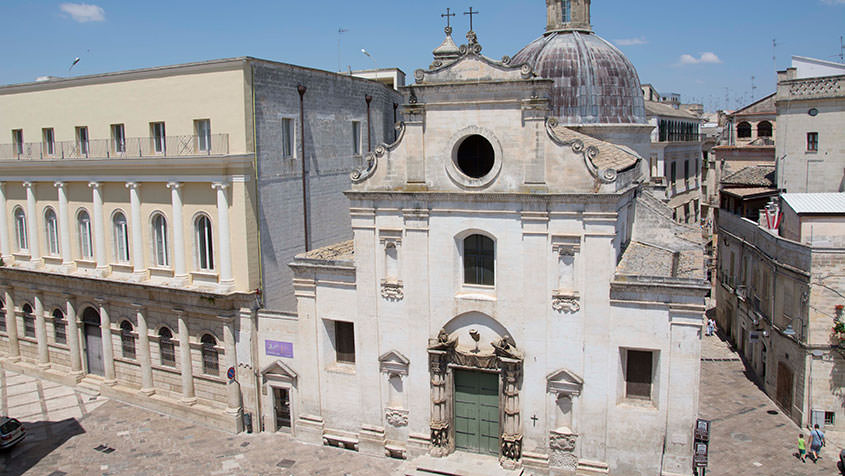
The Rocky Church of Saint Michele of the Caves and the district Fondovito
Excavated in the tufa, is the rocky church most important in the area and it lies directly on the Gravina; preceded by a lot of caves ,which had different functions in the centuries, the church is quadrangular with five naves, supported by 14 pillars in natural rock. The church has frescoes (one of them with Christ Pantocrator with the saints Paolo and Michele) and three altars with three statues in plaster and rocks, datable to 600 or 700, three archangels, and a medieval tomb. In the cave nearby there are a lot of skulls and bones, which belong for a legend to the martyrs of the Saracen attack of 999, but that probably belong to dead body taken here in the centuries XVII-XVIII…
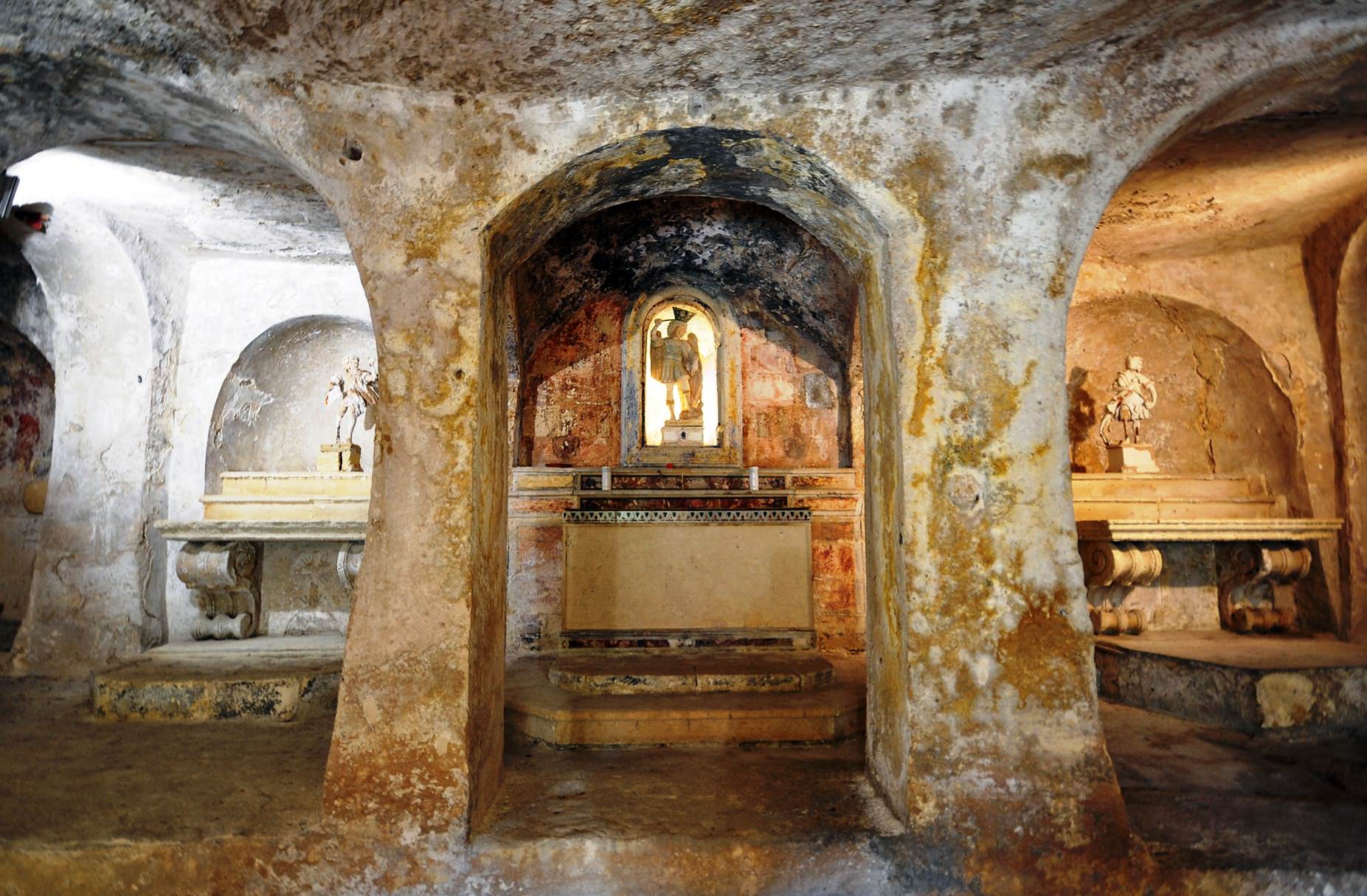
Situated in the ancient area Fondovico or Fondovito, the 8th may of every year, it’s the place for the celebration of Saint Michele of the Caves to remember the apparition of the Saint in a cave of the Mountain Sant’Angelo. In this occasion the inhabitants decorated the streets with the famous “balloni”.
Museum Ettore Pomarci Santomasi
The foundation “Ettore Pomarici Santomasi”, located in the heart of the ancient city, was built in 1920, 3 years later after the death of the baron Pomarici Santomasi who gave his buildind and his property to the city as a present so that it might become a Museum.On the ground floor there are 3 rooms devoted to the dresses of the family and to majolicas. The Cript of Saint Vito The Old, big example of medieval rocky art, rebuilt in 1968, after the detachment from a local rocky church.
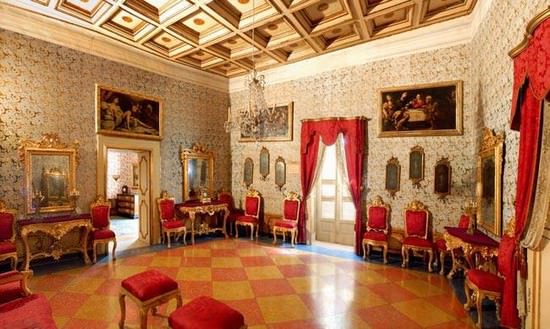
At first floor, the Apartment represents an example of the life of the Pomarici Santomasi family, organized in seven rooms, with baroque furniture, datable to Neapolitan 600 or 700.At the second floor, the Museum where there is an Archeological collection with ceramics and bronze finds found out in the excavations in the Botromagno area datable from VII to III century b. C. This collection includes more than 2000 precious finds which give the possibility to reconstruct the process of human settlement in the land of Gravina. The Picture gallery owns 263 canvas. It’s famous for its artistic value in the region end beyond, the “Saint Sebastiano” by Ludovico Carracci, 1599, The “Virgin with the Child” and the “Discussion of Christ with the Doctors”. Important also the ovals which represent the “Allegory of the 4 Continents” realized by Saverio Persico. The Collection of weapons and military relies owned by the Foundation “Ettore Pomarici Santomasi” of Gravina can be divided in 3 different groups. The anciest one, and the most important, is made up of weapons and borbonic uniforms, datable between 1832 and 1850. The second section owns the weapons and the Italian uniforms datable between 1860 and the end of the siècle. The third section has the Italian and Austrian weapons and the relics used in the First World War. Then an important section of Numismatics, with coins of the ancient Greece, when coins were muted in that place.
The rocky group of the seven Rooms
It’s datable, maybe, at the last centuries of the high Middle-Age. It was excavated in the tuff, and it is composed by different rooms and it lies on the west side of Gravina.
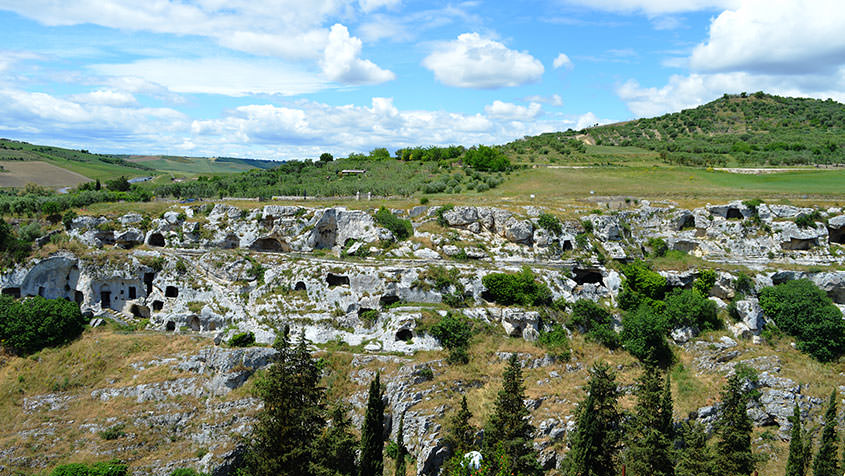
The National Park of Alta Murgia
One of the bigger and most charming park in Italy, established in 2004, it’s a natural protected area situated between the province of Bari and Barletta-Trani –Andria, which is made up of 13 cities. The seat of the organization of the park is in Gravina. A rural park which has an incredible fauna and flora and finds richness also in the heritage of anthropological signs: farms, jazzi, neviere, walls, until the most important witness, the federician “Castel del Monte”, heritage of Unesco.The territory of the Park has been changed in the years by the strength of the erosion.
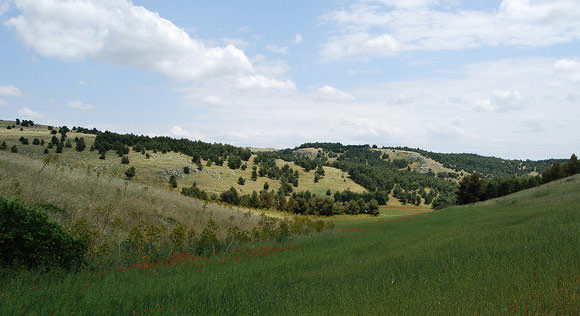
The canyon of Gravina, which comes down to Matera and the Bradano, signs the south-western border of the protected area. Near Altamura there are the karst sinkholes of the Pulo, exceeded for the depth by the Pulicchio of Gravina (100 meters). Though the landscape of the park has been modified in the centuries by man, The High Murgia saves a fauna and a flora very interesting, with infinite spaces and colours of the nature where it’s possible to walking, cycling and riding.One of the most important thing to visit is the group of the Wood Pantano, with the Farm Pellicciari and his Jazzo (also known as “Pantano”), the Pullicchio of Gravina and the Fortress of Garagnone.
The Bridge Aqueduct Viaduct of the Virgin of the Star
It’s a construction with double arch, started in 1743 and finished in 1778, financed by the Dukes Orsini. At first was a viaduct for reaching the sanctuary Mariano of the Virgin of the Star and an aqueduct for supplying the city with water from the sources in the north of the city, saint Angelo and saint Giacomo. Become a symbol of Gravina, it joins the two edges of the ravine, allowing to reach the archeological and rocky area of Padreterno and Botromagno.
